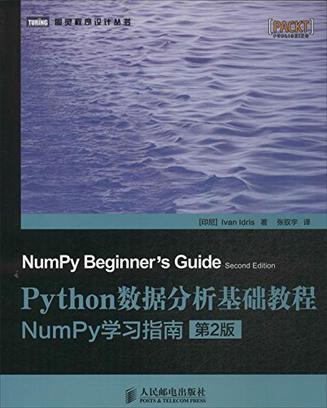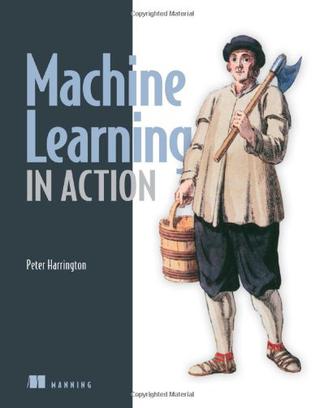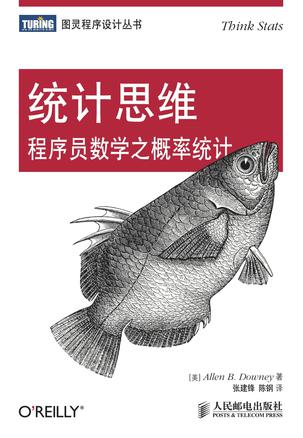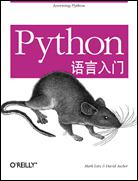-

Python数据分析基础教程(第2版)
NumPy是一个优秀的科学计算库,提供了很多实用的数学函数、强大的多维数组对象和优异的计算性能,不仅可以取代Matlab和Mathematica的许多功能,而且业已成为Python科学计算生态系统的重要组成部分。但与这些商业产品不同,它是免费的开源软件。 本书从NumPy安装讲起,逐渐过渡到数组对象、常用函数、矩阵运算、线性代数、金融函数、窗函数、质量控制等内容,致力于向初中级Python编程人员全面讲述NumPy及其使用。另外,通过书中丰富的示例,你还将学会Matplotlib绘图,并结合使用其他Python科学计算库(如SciPy和Scikits),让工作更有成效,让代码更加简洁而高效。 主要内容: 在不同平台安装NumPy; 用简洁高效的NumPy代码实现高性能计算; 使用功能强大的通用函数; 使用NumPy数组和矩阵; 用NumPy模块轻松执行复杂的数值计算; Matplotlib绘图; NumPy代码测试。 -

Python数据分析基础教程(第2版)
NumPy是一个优秀的科学计算库,提供了很多实用的数学函数、强大的多维数组对象和优异的计算性能,不仅可以取代Matlab和Mathematica的许多功能,而且业已成为Python科学计算生态系统的重要组成部分。但与这些商业产品不同,它是免费的开源软件。 本书从NumPy安装讲起,逐渐过渡到数组对象、常用函数、矩阵运算、线性代数、金融函数、窗函数、质量控制等内容,致力于向初中级Python编程人员全面讲述NumPy及其使用。另外,通过书中丰富的示例,你还将学会Matplotlib绘图,并结合使用其他Python科学计算库(如SciPy和Scikits),让工作更有成效,让代码更加简洁而高效。 主要内容: 在不同平台安装NumPy; 用简洁高效的NumPy代码实现高性能计算; 使用功能强大的通用函数; 使用NumPy数组和矩阵; 用NumPy模块轻松执行复杂的数值计算; Matplotlib绘图; NumPy代码测试。 -

Machine Learning in Action
It's been said that data is the new "dirt"—the raw material from which and on which you build the structures of the modern world. And like dirt, data can seem like a limitless, undifferentiated mass. The ability to take raw data, access it, filter it, process it, visualize it, understand it, and communicate it to others is possibly the most essential business problem for the coming decades. "Machine learning," the process of automating tasks once considered the domain of highly-trained analysts and mathematicians, is the key to efficiently extracting useful information from this sea of raw data. By implementing the core algorithms of statistical data processing, data analysis, and data visualization as reusable computer code, you can scale your capacity for data analysis well beyond the capabilities of individual knowledge workers. Machine Learning in Action is a unique book that blends the foundational theories of machine learning with the practical realities of building tools for everyday data analysis. In it, you'll use the flexible Python programming language to build programs that implement algorithms for data classification, forecasting, recommendations, and higher-level features like summarization and simplification. As you work through the numerous examples, you'll explore key topics like classification, numeric prediction, and clustering. Along the way, you'll be introduced to important established algorithms, such as Apriori, through which you identify association patterns in large datasets and Adaboost, a meta-algorithm that can increase the efficiency of many machine learning tasks. -

Machine Learning in Action
It's been said that data is the new "dirt"—the raw material from which and on which you build the structures of the modern world. And like dirt, data can seem like a limitless, undifferentiated mass. The ability to take raw data, access it, filter it, process it, visualize it, understand it, and communicate it to others is possibly the most essential business problem for the coming decades. "Machine learning," the process of automating tasks once considered the domain of highly-trained analysts and mathematicians, is the key to efficiently extracting useful information from this sea of raw data. By implementing the core algorithms of statistical data processing, data analysis, and data visualization as reusable computer code, you can scale your capacity for data analysis well beyond the capabilities of individual knowledge workers. Machine Learning in Action is a unique book that blends the foundational theories of machine learning with the practical realities of building tools for everyday data analysis. In it, you'll use the flexible Python programming language to build programs that implement algorithms for data classification, forecasting, recommendations, and higher-level features like summarization and simplification. As you work through the numerous examples, you'll explore key topics like classification, numeric prediction, and clustering. Along the way, you'll be introduced to important established algorithms, such as Apriori, through which you identify association patterns in large datasets and Adaboost, a meta-algorithm that can increase the efficiency of many machine learning tasks. -

统计思维
代码跑出来的概率统计问题; 程序员的概率统计开心辞典; 开放数据集,全代码攻略。 现实工作中,人们常被要求用数据说话。可是,数据自己是不能说话的,只有对它进行可靠分析和深入挖掘才能找到有价值的信息。概率统计是数据分析的通用语言,是大数据时代预测未来的根基。 站在时代浪尖上的程序员只有具备统计思维才能掌握数据分析的必杀技。本书正是一本概率统计方面的入门图书,但视角极为独特,折射出大数据浪潮的别样风景。作者将基本的概率统计知识融入Python编程,告诉你如何借助编写程序,用计算而非数学的方式实现统计分析。一个趣味实例贯穿全书,生动地讲解了数据分析的全过程:从采集数据和生成统计量,到识别模式和检验假设。一册在手,让你轻松掌握分布、概率论、可视化以及其他工具和概念。 编写测试代码深入理解概率论和统计学 运行实验检验统计行为特征,如生成服从各种分布的样本 通过模拟理解数学上艰涩的概念 学习贝叶斯估计等实用内容 用Python导入各种来源的数据 运用统计推断解决真实数据问题 《统计思维:程序员数学之概率统计》是一本以全新视角讲解概率统计的入门图书。抛开经典的数学分析,Downey 手把手教你用编程理解统计学。概率、分布、假设检验、贝叶斯估计、相关性等,每个主题都充满趣味性,经编程解释后变得更为清晰易懂。 本书研究数据主要来源于美国全国家庭成长调查(NSFG)与行为风险因素监测系统(BRFSS),数据源及解决方案的相关代码全部开放,具体章节列出了大量学习和进阶资料,方便读者参考。 Allen B. Downey是富兰克林欧林工程学院的计算机科学副教授,曾执教于韦尔斯利学院、科尔比学院和加州大学伯克利分校。他先后获麻省理工学院计算机科学硕士学位和加州大学伯克利分校计算机科学博士学位。Downey已出版十余本技术书,内容涉及Java、Python、C++、概率统计等,深受专业读者喜爱。他的最新Think系列书还有Think Complexity: Complexity Science and Computational Modeling、Think Python。 -

Python语言入门
书中描述了Python程序的基本构件:类型、操作符、语句、函数、模块、类以及异常,此外还介绍了更多高级主题,包括复杂的实例,最后讲述了如何使用Python定制库来创建大型程序。